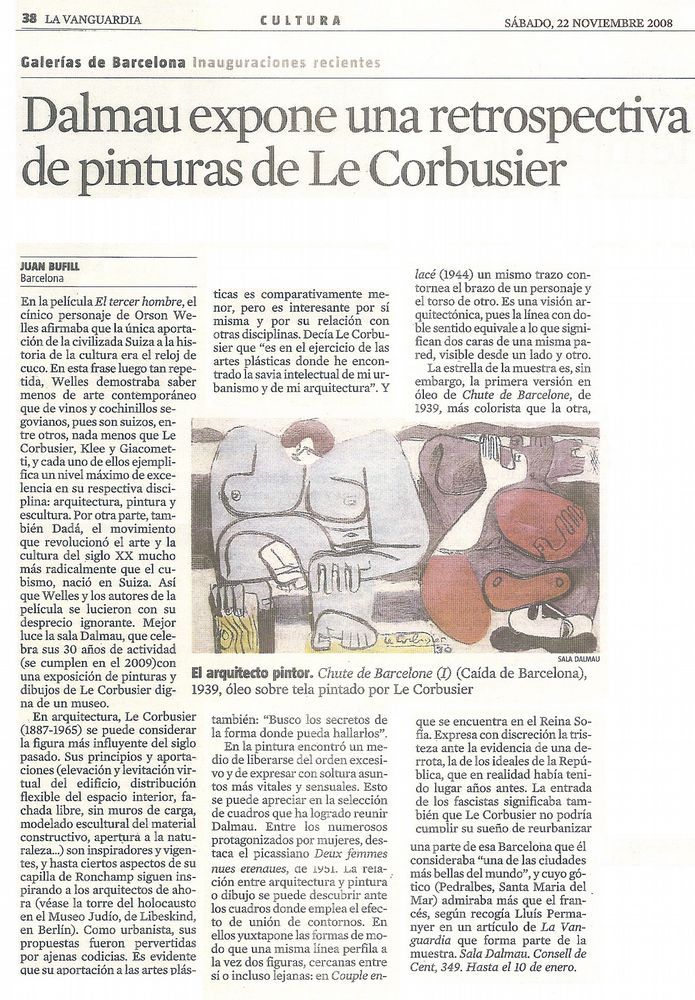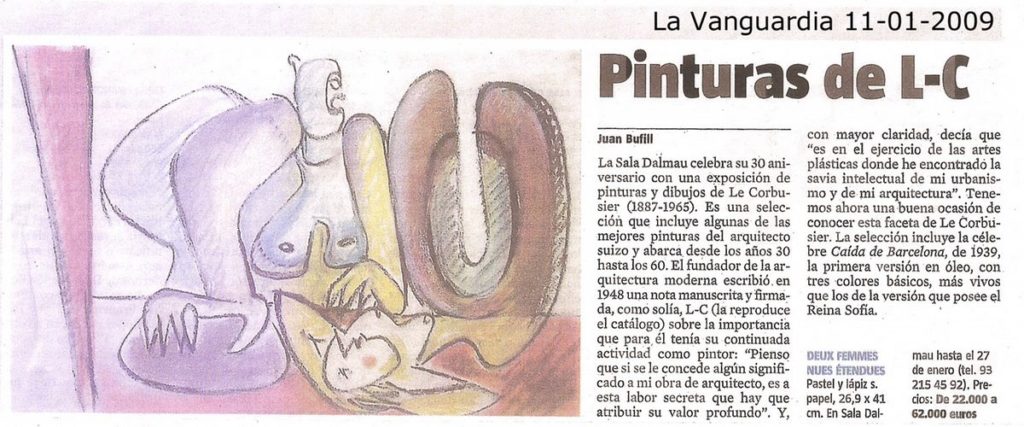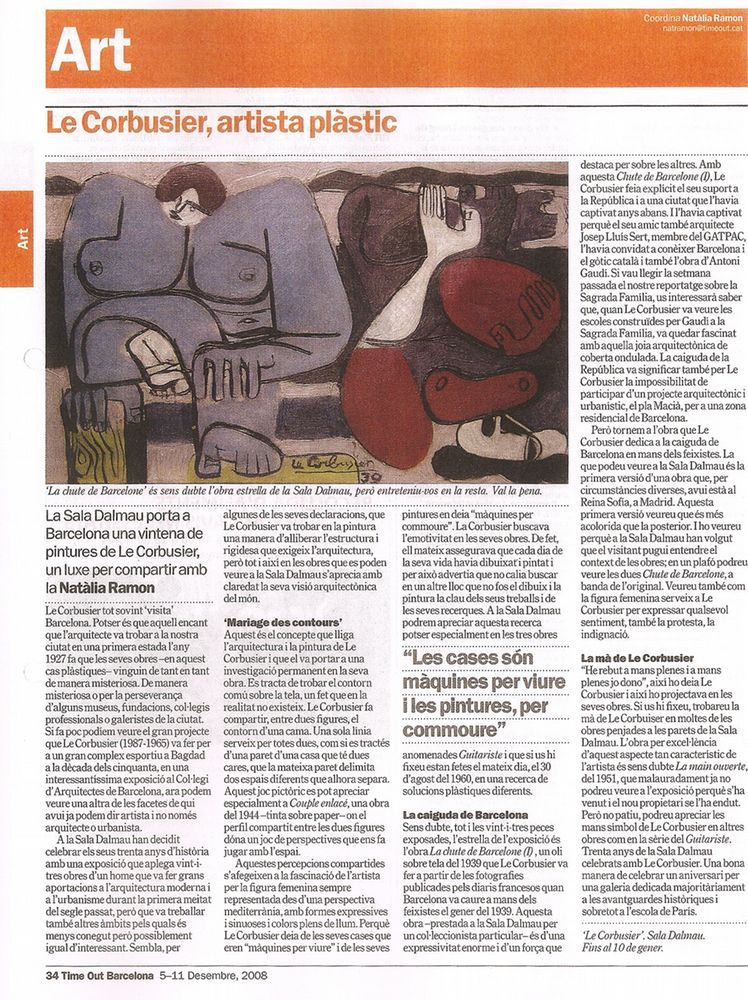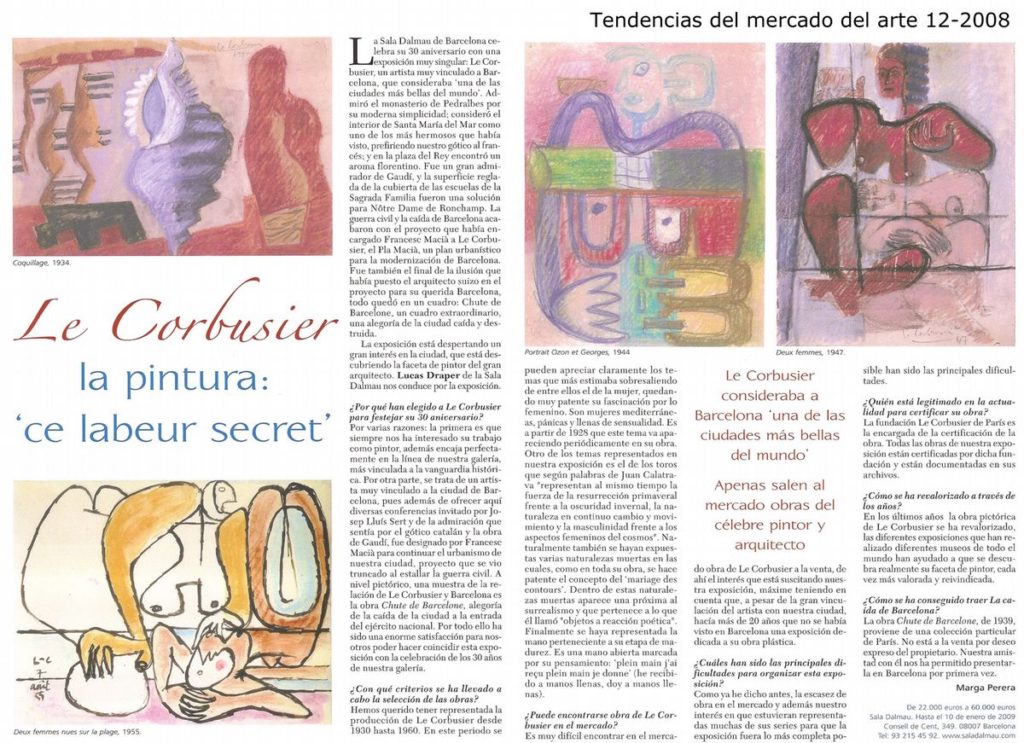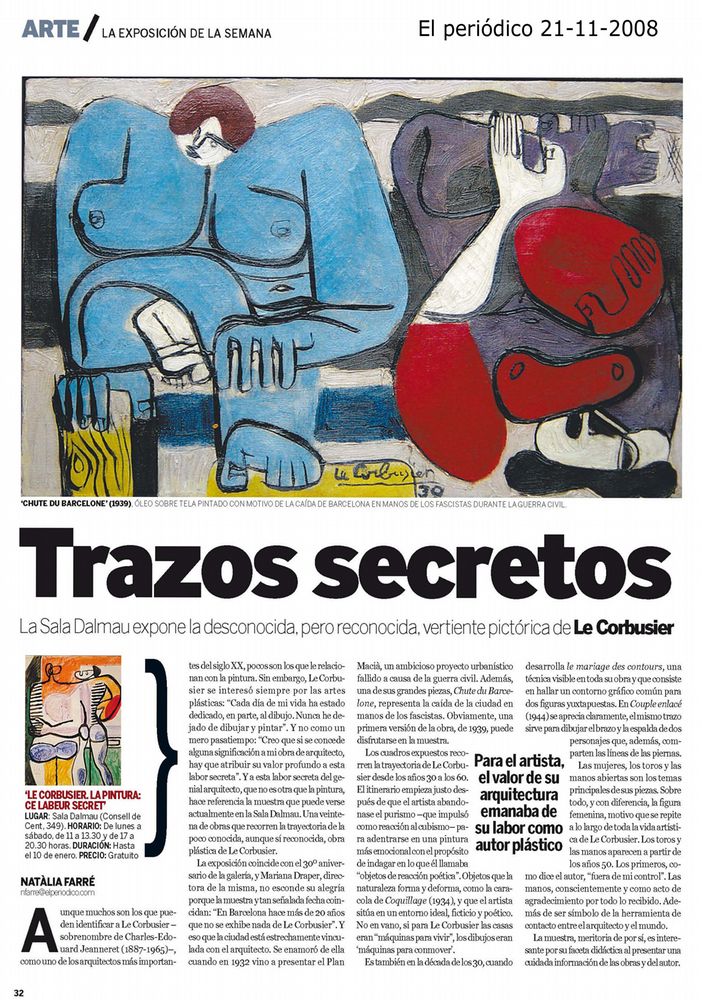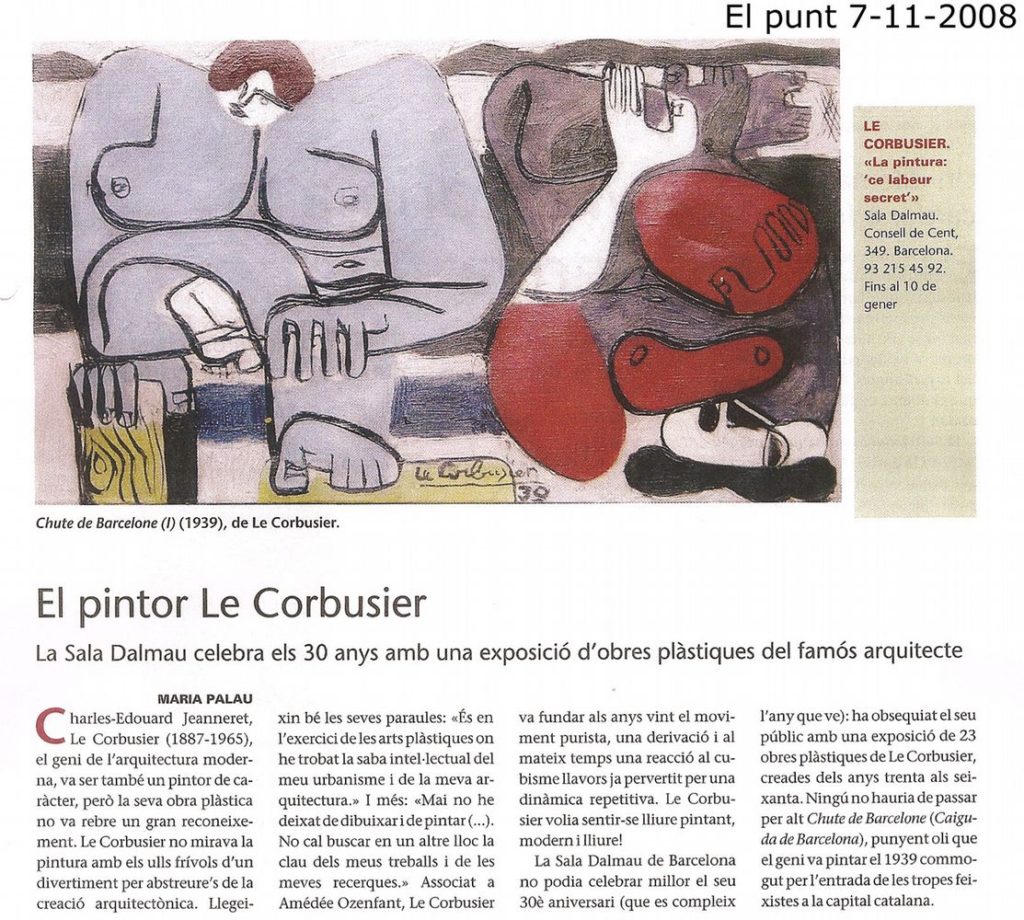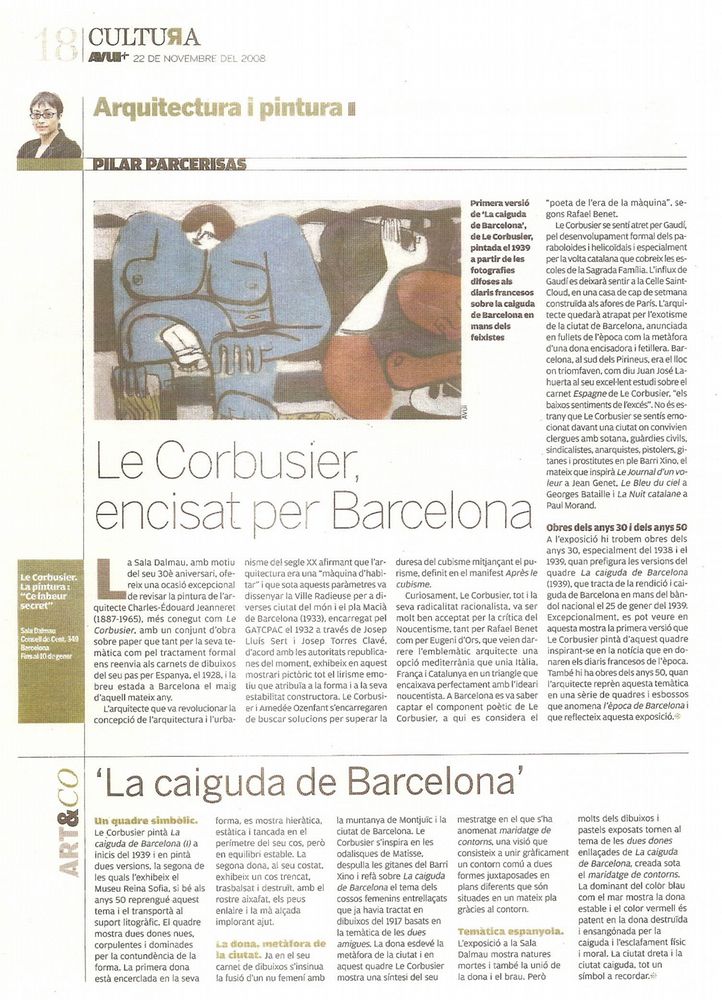LE CORBUSIER
Charles-Edouard Jeanneret, known as Le Corbusier, was born at La Chaux-de-Fonds (Switzerland) October 6th, 1881. He studies engraving for the clock industries at his hometown’s Art School. One of his teachers will be the painter L’Esplattenier, who would direct him towards architecture.
Between 1907 and 1911 he does a series of travels through Europe, visiting the studios of the great modern architects. In Paris he works as designer for 14 months at Auguste Perret’s studio, in Vienna he gets in contact with the Vienna Secession. In Berlin he frequents Peter Behrens’s studio, where he meets Gropius and Mies van der Rohe. He goes to Italy, the Balkans, Greece, and Turkey. It is a period of formation and discovery that will be key on the evolution of Le Corbusier.
Between 1911 and 1916 he studies architecture at Chaux-de-Fonds and paints watercolors of intimist or mythological themes influenced by Fauvism and Cubism.
He settles in Paris in 1917, a year later he meets Amédée Ozenfant who will lead him to painting, reaffirming his pictorial vocation. Together, in reaction to Cubism, will publish the manifest “Après le cubism”, that will be the basis of his purist paintings based on the rigor and the purity of the compositions. They develop the “union of contours” technique: the objects are united by their contour without deforming. In December he exhibits at the Thomas gallery in Paris.
In 1920 he founds with Ozenfant and Paul Dermée the magazine “L’Esprit Nouveau”. He signs his first article as Le Corbusier.
In 1921 he exhibits at Druet gallery in Paris with Ozenfant and in 1922 he takes part at the Salon des Indépendants, it will be a mature painting. He will focus on architecture and open his own architecture studio with his cousin Pierre Jeanneret.
He befriends the Cubist painting collector Paul La Roche, to whom will do the “Ville La Roche”. In 1923 he exhibits again with Ozenfant at Leonce Rosenberg’s gallery “L’Effort moderne” in Paris.
In 1925 he has a falling out with Ozenfant and “L’esprit nouveau” magazine closes, but Le Corbusier will keep investigating in the purist principles in his painting.
He will go from representing industrial objects (bottles, glasses…) to the typical cubist objects such as the guitar. Around 1928, the feminine figure becomes a recurring theme: a sculptural, hieratic woman.
Both he and Léger coincide in the search of new artistic goals by investigating the use of color in architecture and they end up influencing each other, mainly during 1920s and 1930s.
In 1927 he visits Madrid and does a few lectures at the Students Residence. There he will meet Josep Lluís Sert, who will propose him to do conference in Barcelona, something that will allow him to know the work of Antoni Gaudí.
He is a founding member of the International Congress of Modern Architecture at La Sarraz (Switzerland) in1928. He ends his purist period and uses the nickname of Le Corbusier to sign his paintings, He adds new images: the “objects of poetic reaction”, objects that nature forms and deforms such as eroded stones, roots, pieces of wood…
Between 1931 and 1934 he develops the “union of contours” technique now on the theme of the woman. This will be his main subject, especially in the ““Icônes”
series, painting his wife with her hands together. It is a more dynamic feminine figure
Le Corbusier, since his first meeting with the architect Josep Maria Sert develops a close link with Barcelona: he admires Gaudi’s work,takes part in the CIRPAC congress doing a lecture on urbanism, and especially, with the Macià project for a residential zone in Barcelona.
Also, in his plastic work there is apiece that links him tour city and that we presented in our gallery: “Chute de Barcelone” (the fall of Barcelona), from 1939, an allegory of the fall of the city on the Spanish civil war that he devoted a complete series of paintings.
In the mid-1930s he does his first collages and drawings for tapestries. He studies how to use those techniques on industry and architecture.
In 1930 he presents a retrospective exhibition of his plastic work at Zurich’s Kunsthaus.
During the II World War he moves to Vezelay and later on settles in Ozon (French Pyrenees), where he will work on sculpture with the sculptor Joseph Savina who will put in three dimensions his projects, titled “Ozon” or “Ubu”.
He investigates in the relation between the trace of the drawing and the color zones and the use of color in planes, something that will be reflected in his architecture such as in the Unité d’habitation in Marseille.
By the end of the 1940s he works on the book “Poème de l’angle droit” that will lead him to paint a mural at the Swiss pavilion of the University City in Paris.
Pierre Beaudoin encourages him to create cardboards for tapestries that would be sewn in Aubusson. The idea will be tapestry as a “mural for modern times”, that he calls “nomad tapestry”: a moving mural painting, that can change of location just as the modern man does.
In 1950 he publishes Modulor, the result of a research on proportions, a recurring theme on his work. It will be a year of major changes in his painting, especially in his themes. He begins his great series “Taureaux”. The introduction and development of this subject up to 1963 will lead him to poetic, mysterious, geometric paintings, as a result of the influence of India, the Mediterranean world and classic mythology.
Another subject of Le Corbusier’s mature years is the hand. The representation of an open hand, that responds to his thinking “Plein main j’ai reçu plein main je donne (I have received a lot, I give a lot)”. The hand is the contact point between the architect and the world and the organ that allows to give and get.
En 1953 hará importantes exposiciones en el Musée d’Art Moderne de París o en la Kunsthalle de Berna a las que seguirán muchas otras por todo el mundo.
In 1953 he presents major exhibitions at the Musée d’Art Moderne of Paris or at the Kunsthalle in Bern followed by many others all over the world.
Published in 1995, the book of lithographs “Le poème de l’angle droit” is a recapitulation of his career and a summary of his ideas on artistic and architectural creativity in a book of lithographs.
In 1958 Le Corbusier meets Heidi Webber and she will produce his furniture. She also encourages him to work on engravings and proposes him to create a pavilion for his own work, the Heidi Webber Museum - Centre Le Corbusier” in Zurich. This was the last building he designed, his works are displayed there creating a relation between architecture, painting and sculpture. Le Corbusier won’t see it finished as it will open on July 15th, 1967, and he passed in 1965.


